Toitanga
Angus Horne 2 Of The Land
-
Tauira / Student
Angus Horne -
Kaitautoko / Contributor
Allen Wihongi -
Kaiako / Lecturer
Derek Kawiti
-
Client
Ngawha Hot Springs -
School
Victoria University of Wellington, School of Architecture
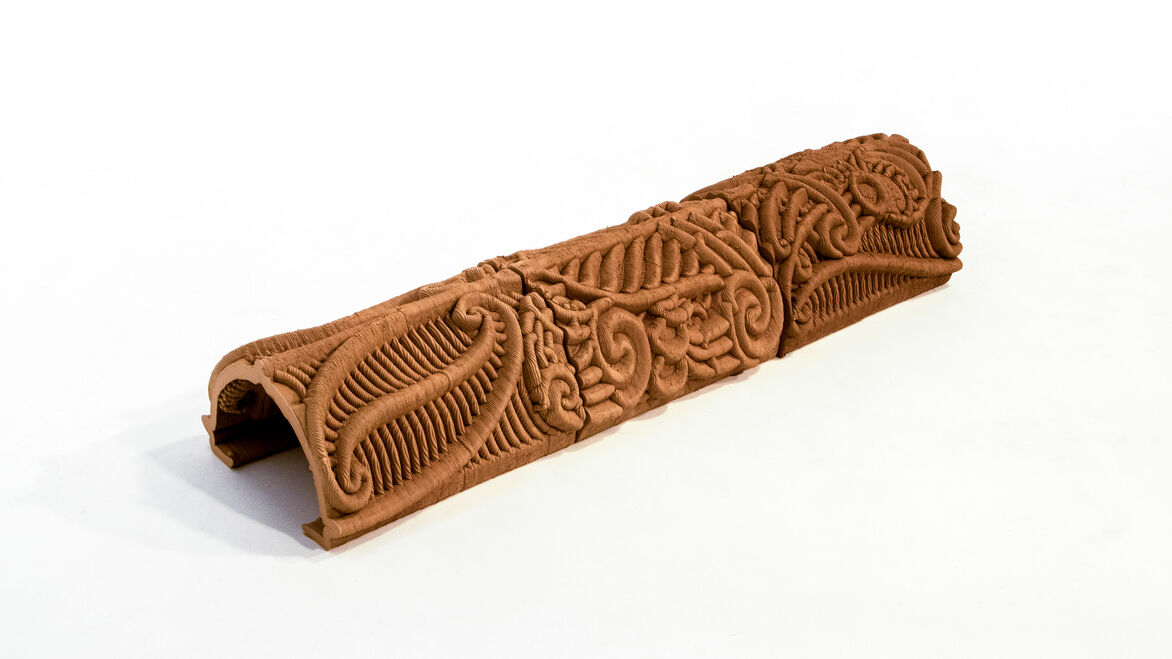
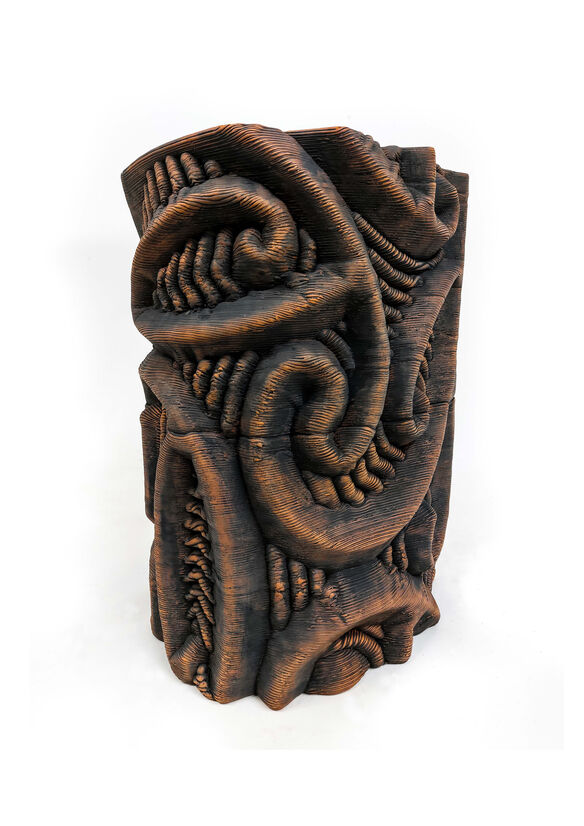
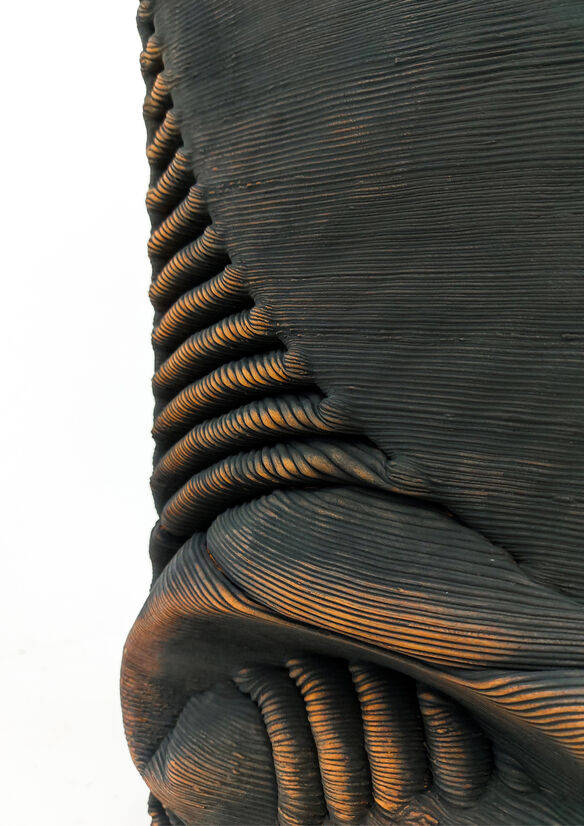
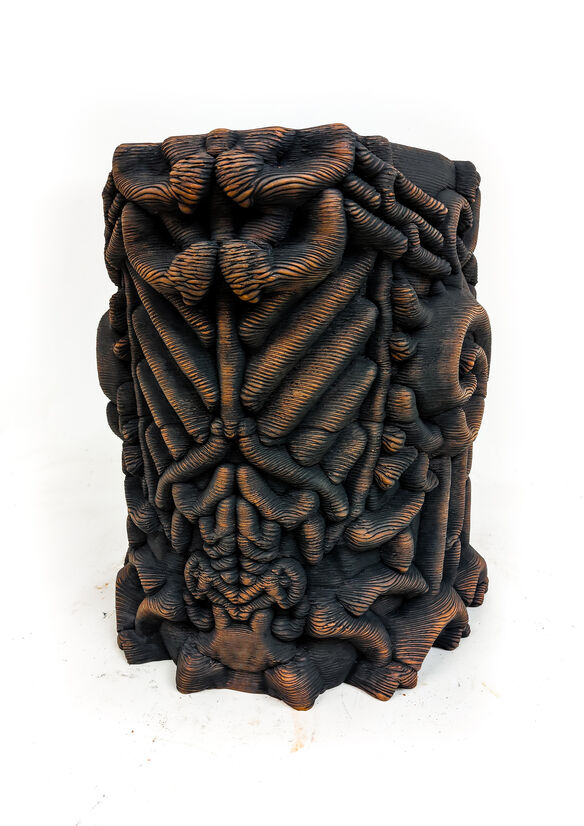
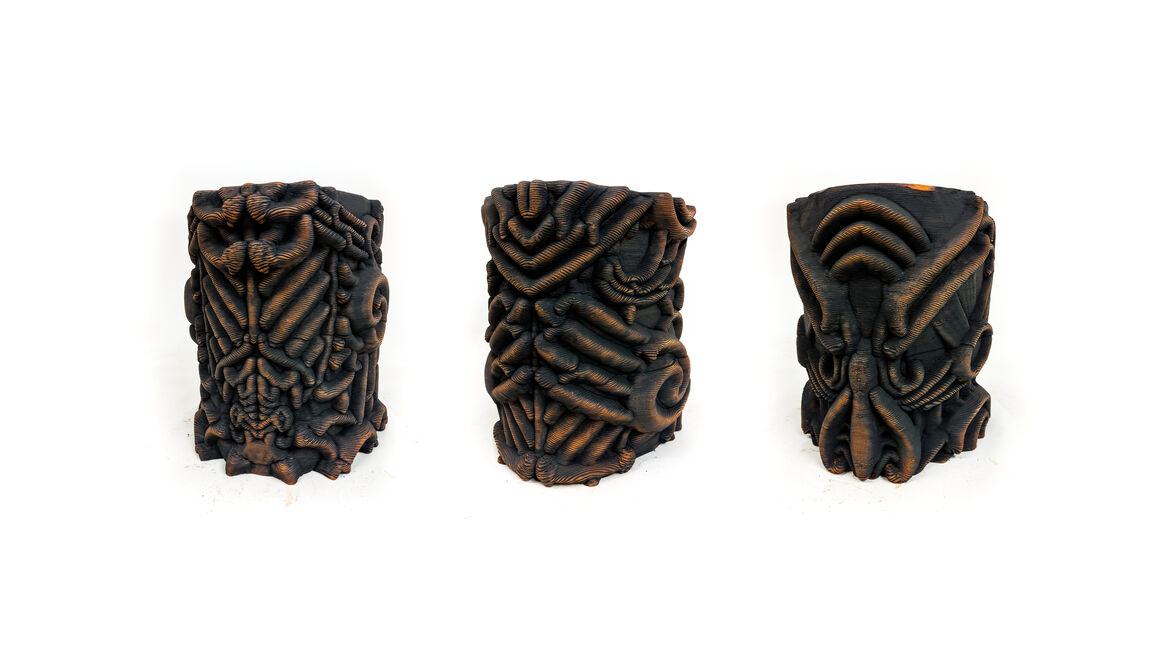
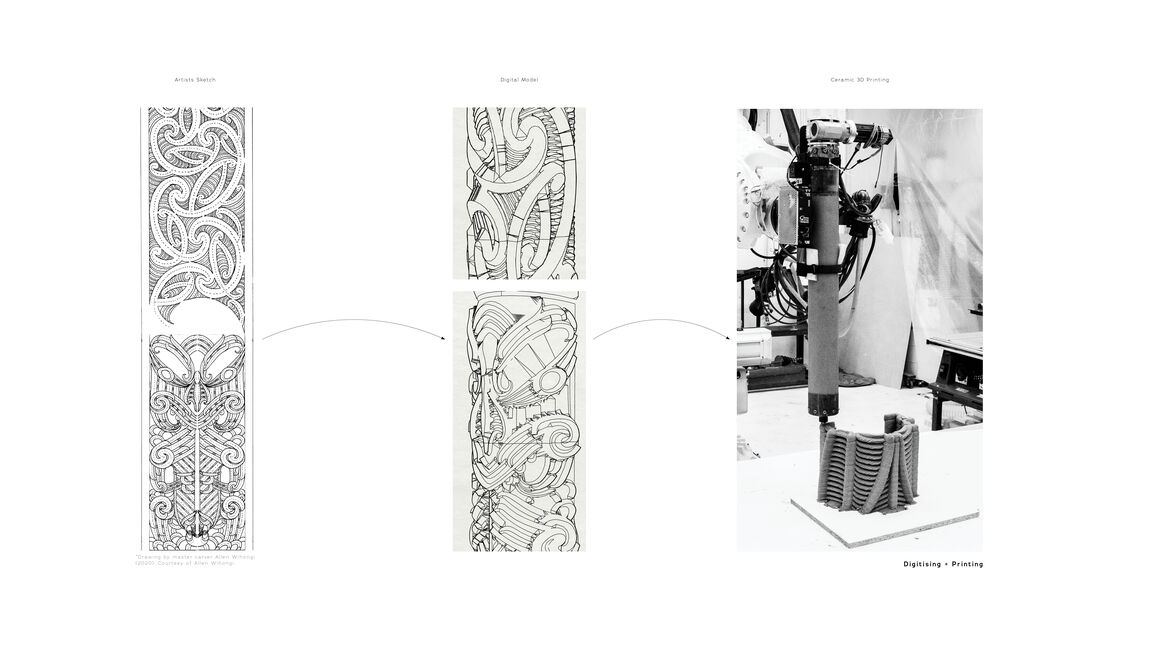
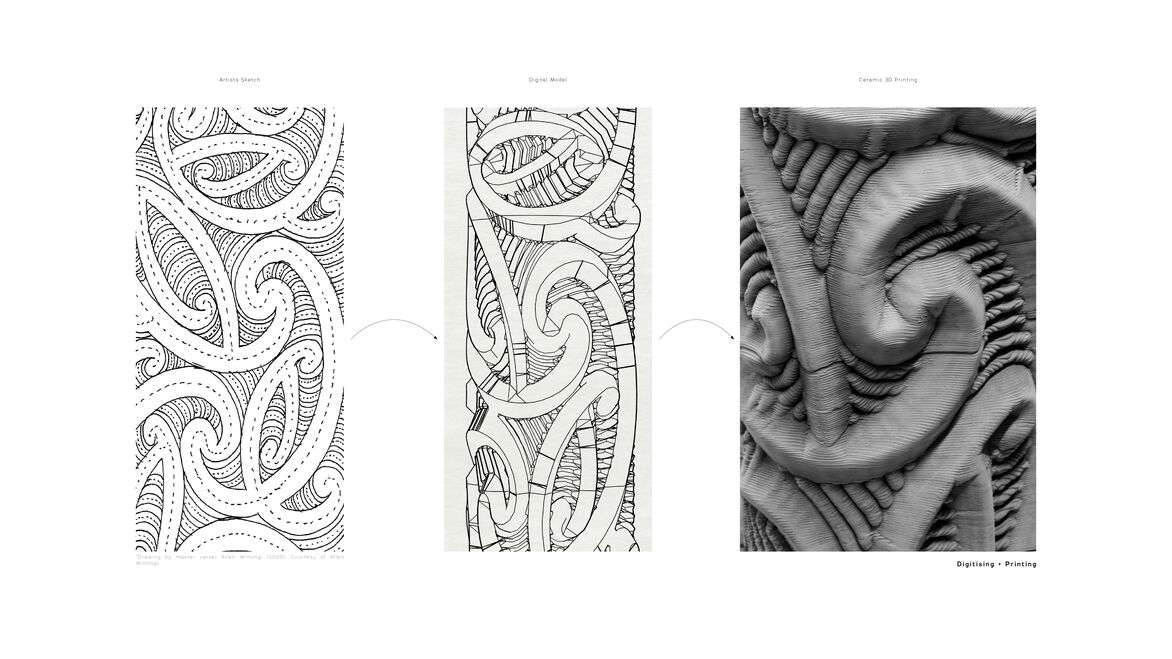
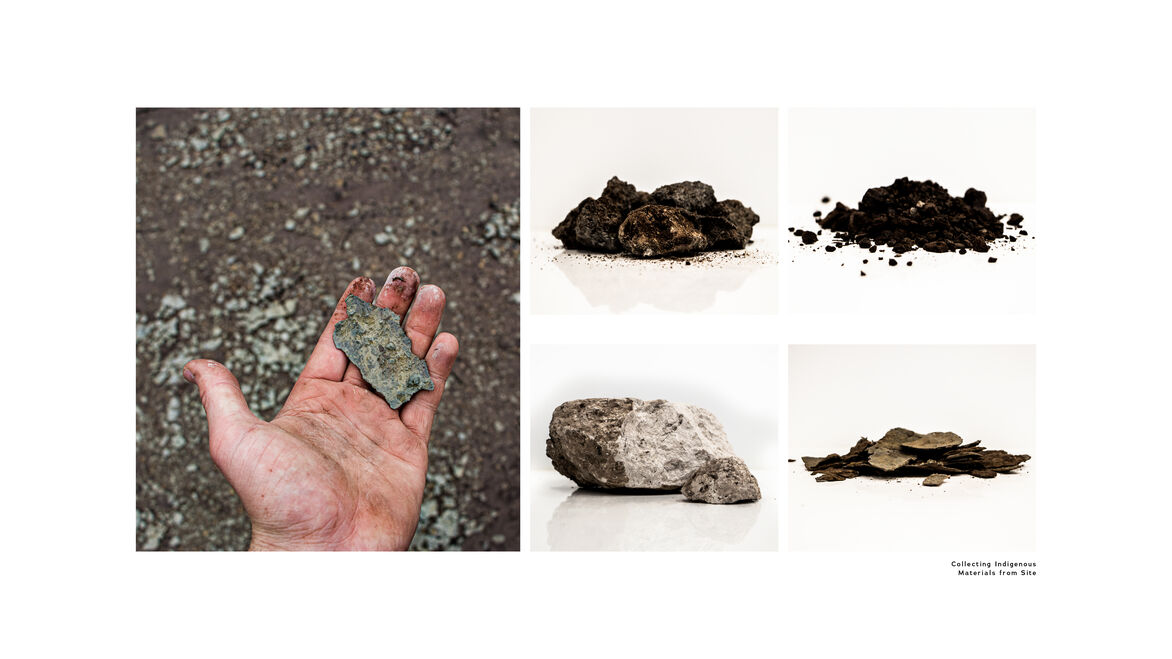
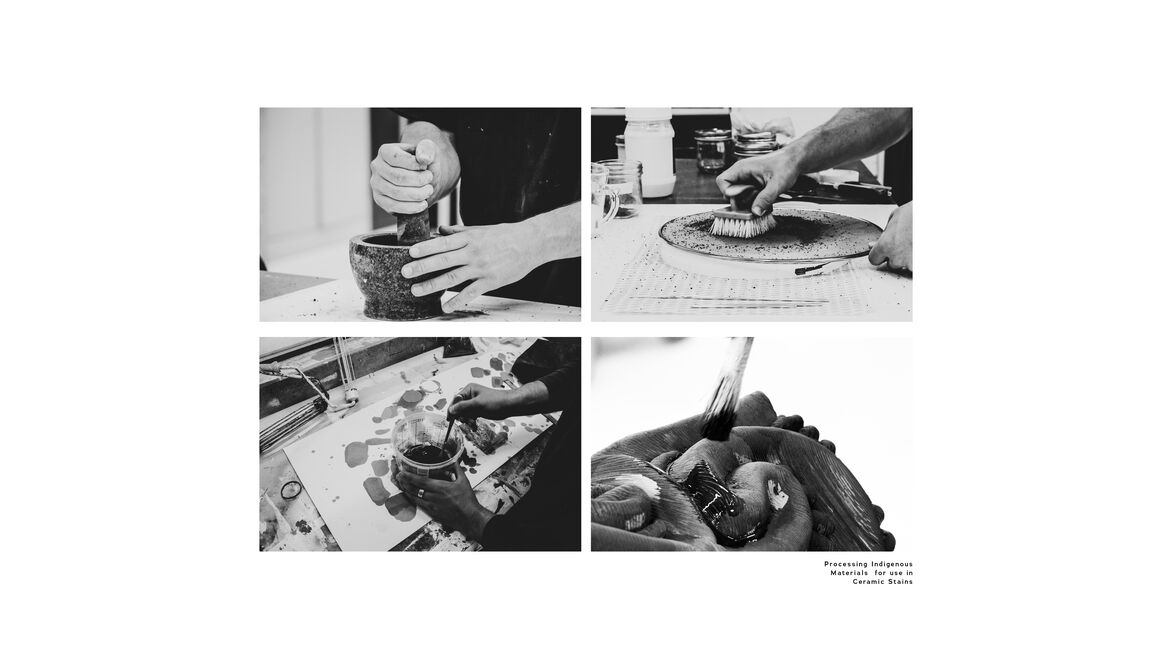

Description:
Of the Land employs parametric software and digital fabrication tools within customary Māori craft. This method is intended to create new contemporary architectural opportunities and outcomes which embody Māori culture. This combination of modern technology and Māoritanga expresses the collaborative nature of the project.
As collaboration was at the core of the project, so too was the principle of whanaungatanga by working in partnership with Māori craftspeople. This collaborative kaupapa facilitated the sharing of knowledge, both Indigenous and technological. Through this process, architectural fabrication tools enabled Māori storytelling and depicting te Uri a Hua hapu of Ngawha Springs whakapapa through the ceramic 3D printed pou.
The design and production of the pou reflected the project’s collaborative intention. Parametric modelling and ceramic 3D printing were integrated within the design and production of traditional Māori pou. Two 1:1 scale ceramic 3D printed pou were produced as part of the new visitor building at Ngawha hot springs in New Zealand’s far north.
Through the exploration of ceramic 3D printing, novel techniques were developed to translate toi whakairo patterns drawn by collaborator and renowned tohunga whakairo Allen Wihongi. In this collaboration, kanohi ki te kanohi partnership was key. The aim was not to replicate the whakairo patterns but to create a new form of visual expression that extended and added to the complexity of the original art form. The techniques and goals reflect the project’s innovativeness.
This project sought to employ an ethos of whāia te iti kahurangi, of striving for excellence.
This is clear as the venture sought to build one of the largest clay 3D printed installations ever made. Rigorous iterative testing was carried out to find the optimal parameters for producing the pou. Developing a mastery of these tools was a critical step in order to create whakairo-based outcomes that embodied Māori culture.
The project engaged in innovative ways of using local Indigenous materials, through processes that reflect kaitiakitanga and express the inner wairua of the land.
The pigmentation properties of the geothermal site were harnessed through extensive testing of the numerous local substrates. Through these tests, a technique for staining the terracotta pieces was developed that manifested a unique aesthetic.
Using local materials to pigment the ceramics enhanced the architecture’s innate qualities, instilling a sense of connection between the land and the local tangata whenua.
The project illustrates that when digital design tools and knowledge of traditional craft are integrated, the outcomes can reinvigorate the role of digital tools and celebrate Māori culture. The relationship built through the transfer of knowledge between tohunga whakairo and the architectural practitioner embodies the customary practice of whanaungatanga. This relationship ensured that the tikanga of toi whakairo were upheld and respected, but new adaptations and enhancements were added. These adaptations allow the expansion of knowledge and craft from one practitioner to the next. This collaborative process between traditional craft and digital tools enables parametric tools to flourish in creating new forms that add to the long lineage of traditional Māori craft.